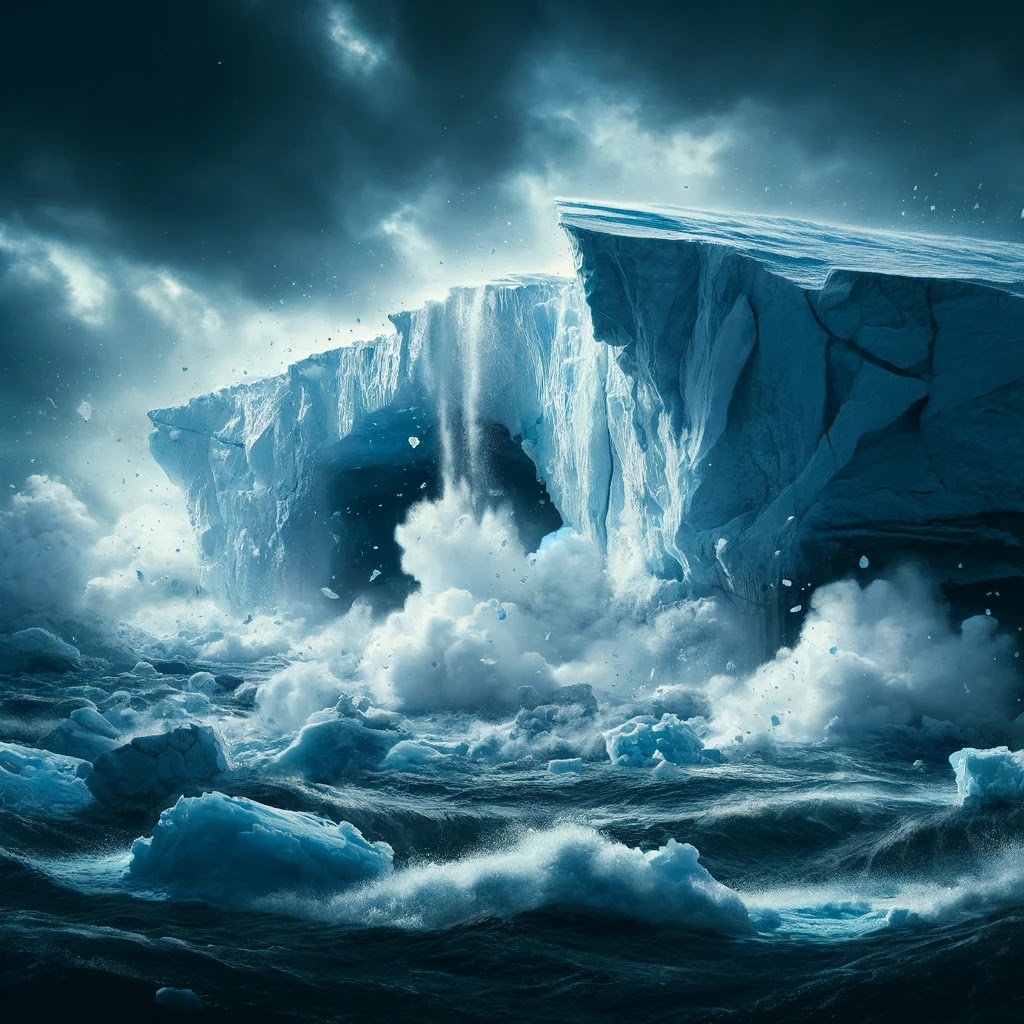
The collapse of ice sheets represents a global phenomenon with far-reaching consequences, signaling a profound change in the Earth’s climate system and serving as a harbinger of the escalating impacts of climate change. These massive bodies of ice, which have graced our planet’s poles and high-altitude regions for millennia, act as colossal reservoirs of freshwater, their existence intricately linked to global temperature patterns, sea levels, and ecosystems.
Ice sheets, primarily found in Greenland and Antarctica, cover vast areas and contain the majority of the world’s freshwater. Their stability is crucial for maintaining current sea levels and regulating the planet’s climate. However, as global temperatures rise due to increased greenhouse gas emissions, ice sheets have begun to melt at an unprecedented rate. This melting is not just a symptom of climate change but also a significant contributor to sea level rise, posing immediate and long-term threats to coastal communities, economies, and habitats worldwide.
The mechanics of ice sheet collapse involve complex interactions between ice, ocean, and air temperatures. Warmer air temperatures directly reduce the surface mass of ice sheets through melting. Simultaneously, warmer ocean temperatures erode ice sheets from below, compromising their structural integrity and hastening their disintegration. The process is self-perpetuating; as ice melts, it exposes darker land or water beneath, which absorbs more solar radiation than ice, further warming the area and accelerating ice loss in a feedback loop with potentially catastrophic implications.
The consequences of ice sheet collapse extend beyond the immediate rise in sea levels. It disrupts global ocean circulation patterns, affecting weather systems and biodiversity across the globe. Changes in freshwater distribution can alter ocean salinity and currents, impacting marine ecosystems, fisheries, and global climate patterns. Moreover, the loss of ice sheets affects planetary albedo, or the Earth’s capacity to reflect solar radiation, further exacerbating global warming.
Socially and economically, the ramifications are equally profound. Rising sea levels threaten to submerge coastal cities, displace millions of people, and obliterate key infrastructure, leading to massive economic losses and potentially triggering global humanitarian crises. The collapse of ice sheets also poses a threat to indigenous communities and species that rely on cold environments, leading to loss of traditional ways of life and mass extinctions.
Addressing this worldwide phenomenon requires concerted international action to mitigate the root causes of climate change. This includes drastically reducing greenhouse gas emissions, transitioning to renewable energy sources, and implementing strategies to enhance the resilience of vulnerable communities. Scientific research plays a critical role in understanding the dynamics of ice sheet collapse, informing policy decisions, and developing innovative solutions to slow down or adapt to the changes.
The collapse of ice sheets is a stark reminder of the interconnectedness of global ecosystems and the urgent need for humanity to adopt sustainable practices. It underscores the importance of international cooperation and the collective responsibility to safeguard our planet for future generations. As we witness the unfolding impact of ice sheet collapse, the call to action becomes increasingly clear: the time for decisive, global measures to combat climate change is now.